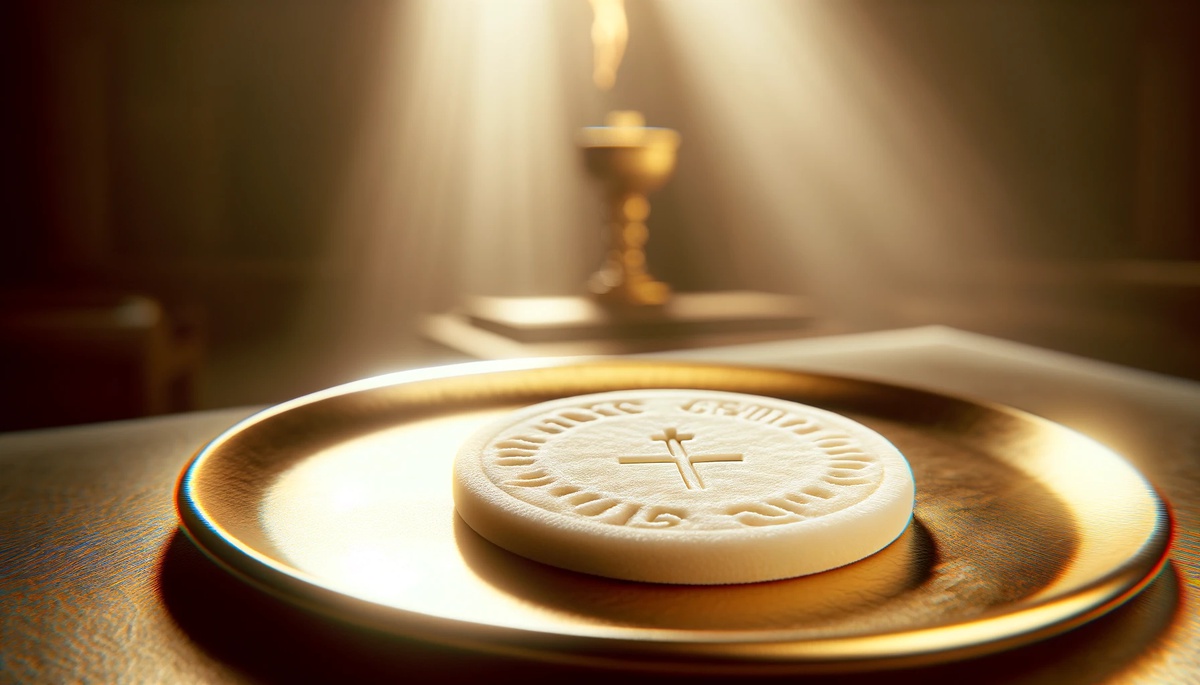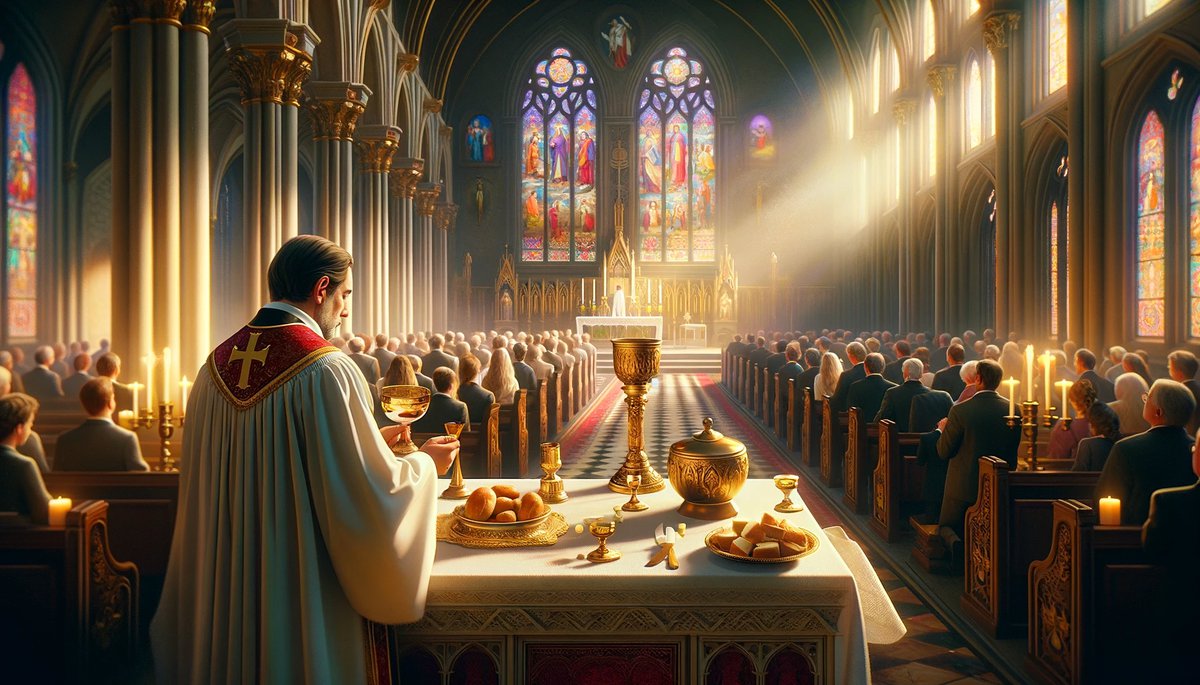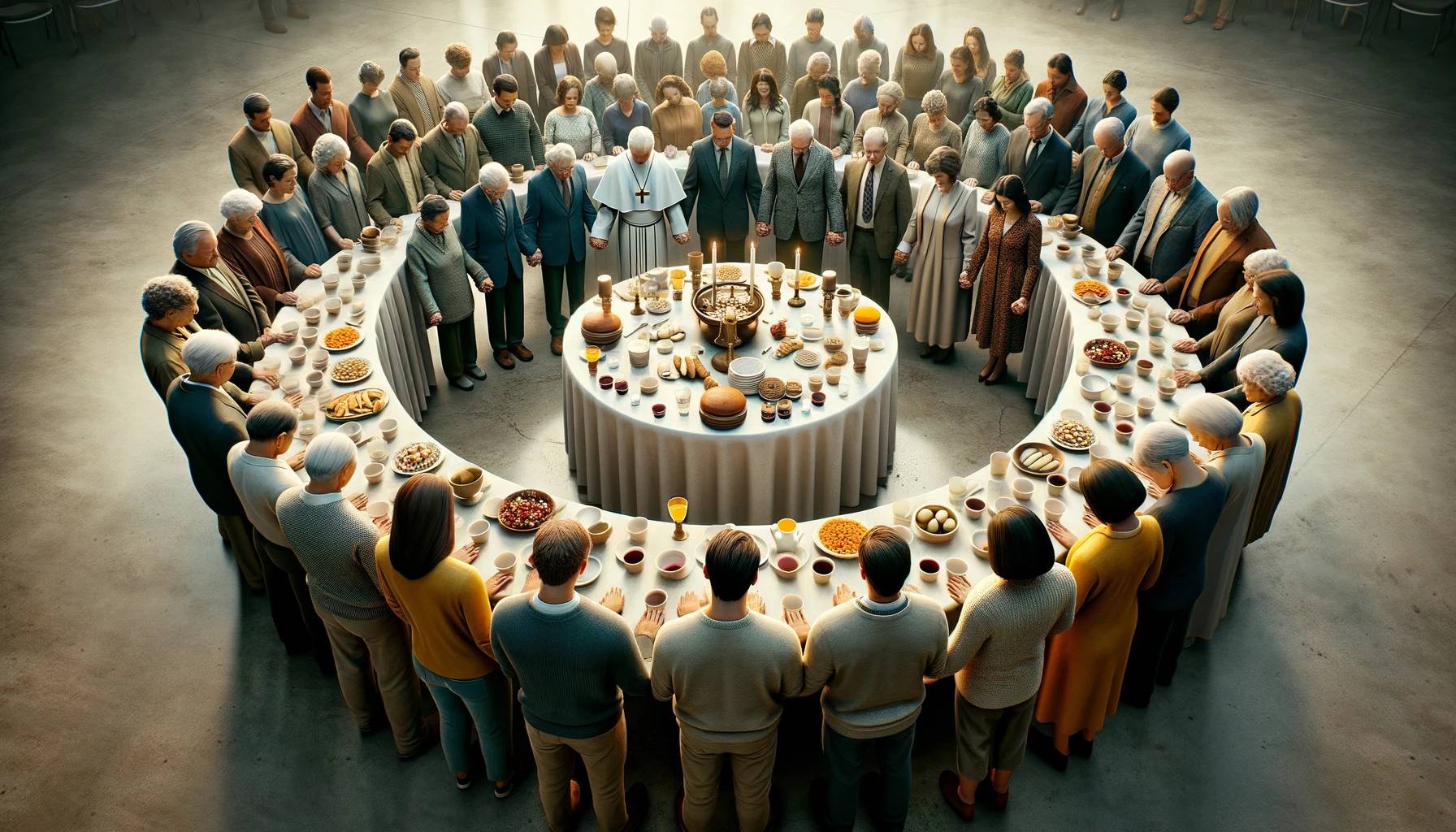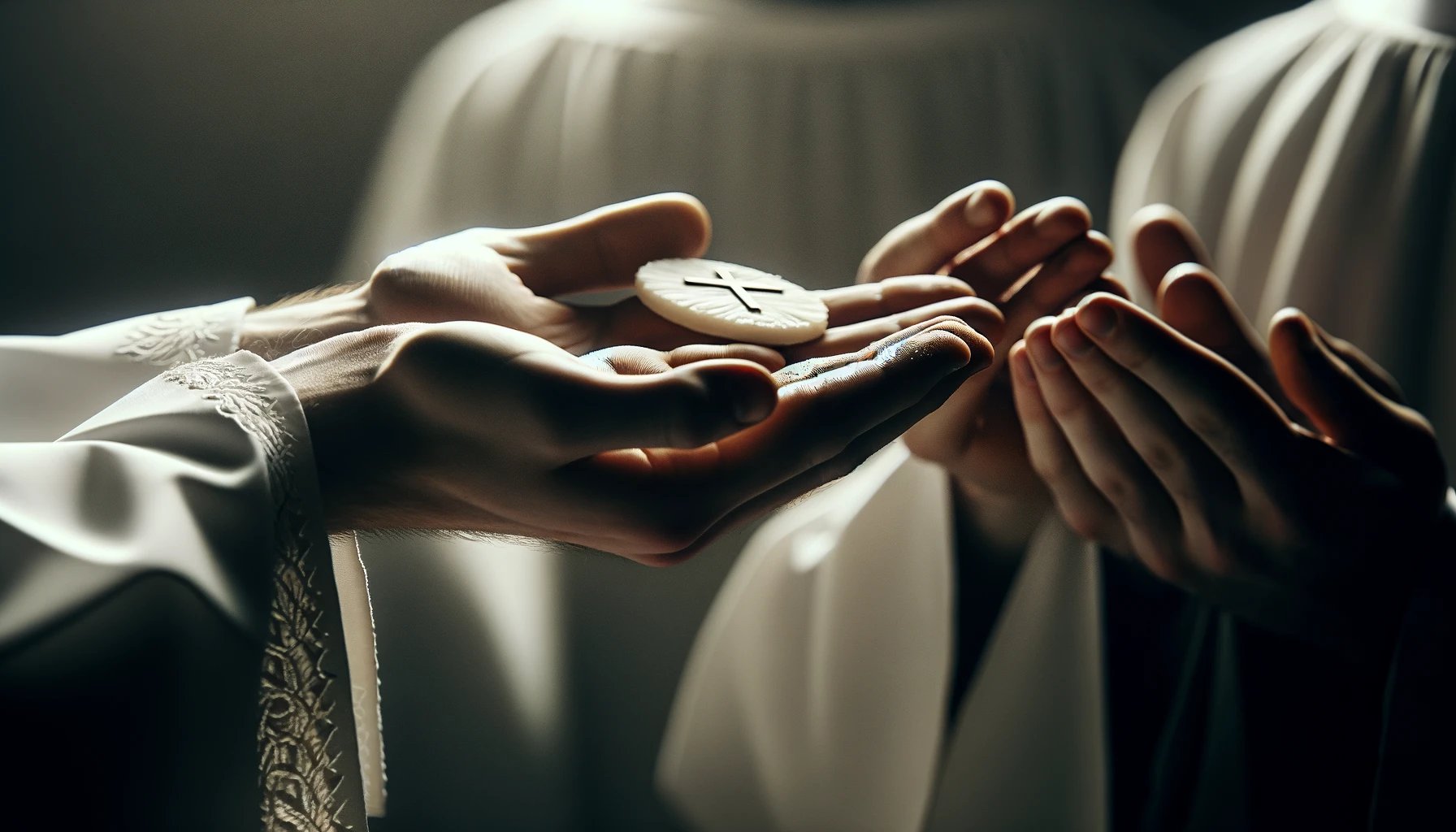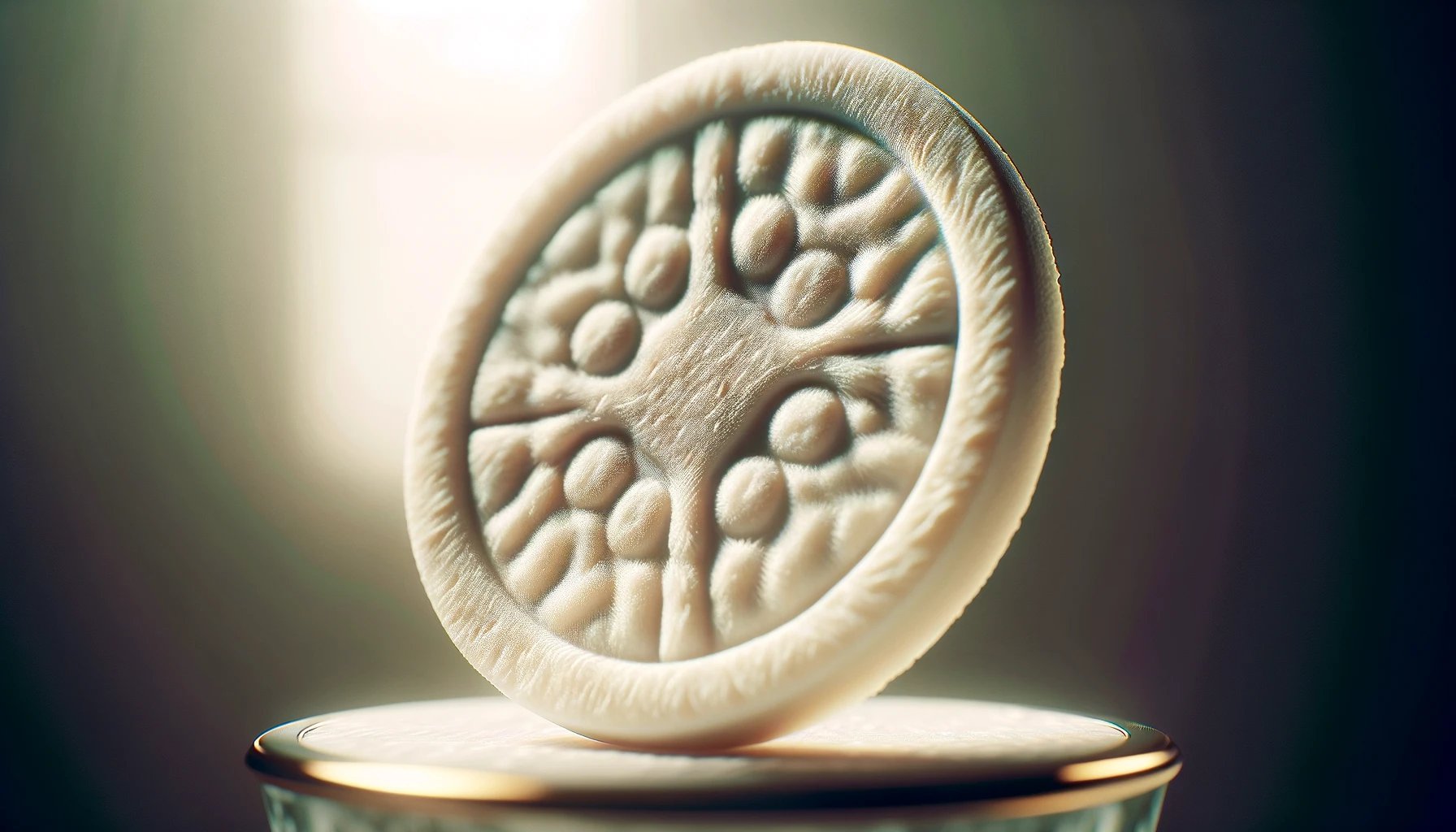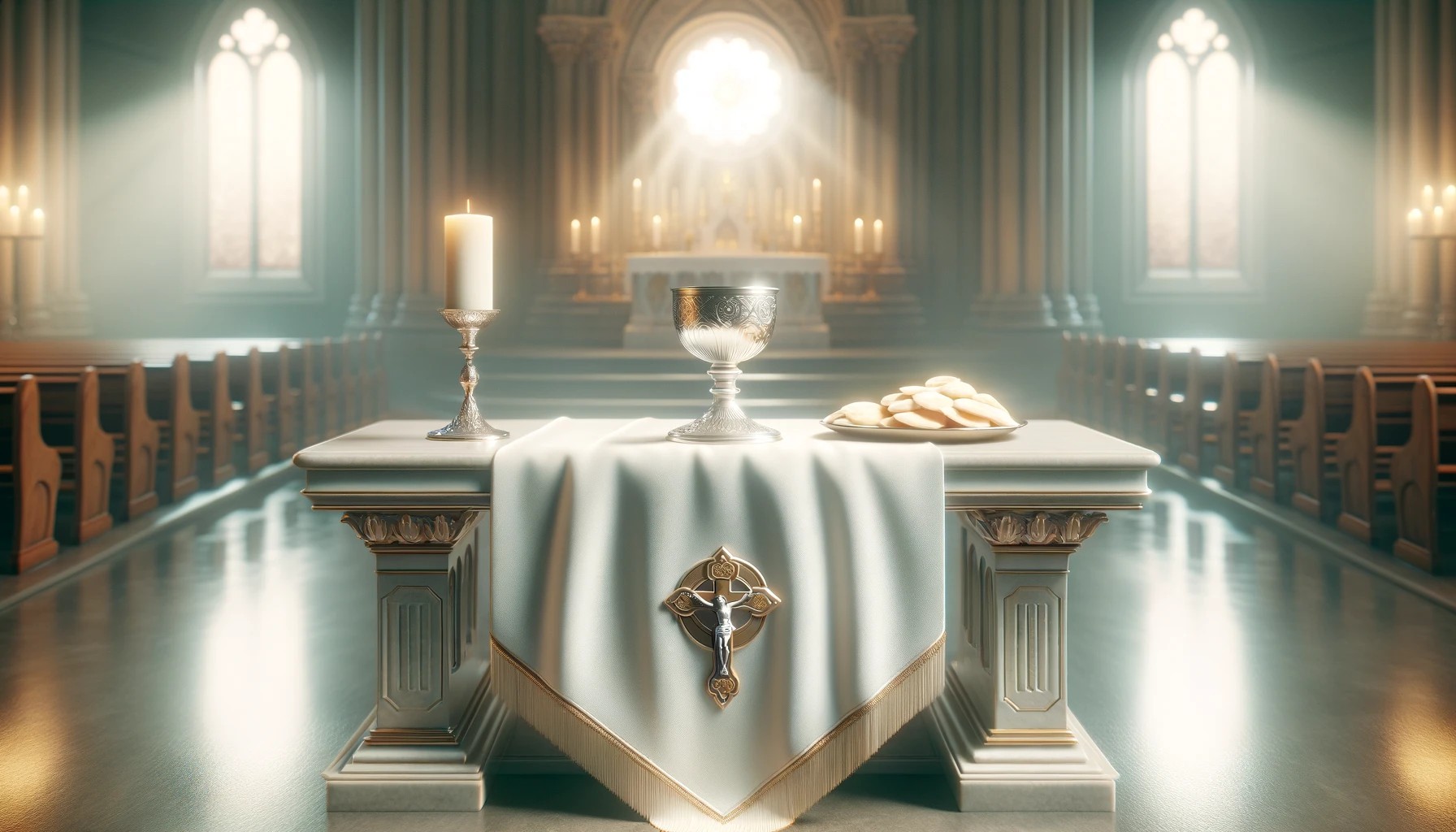Home>Theology and Spirituality>What Is Communion By Intinction


Theology and Spirituality
What Is Communion By Intinction
Published: February 19, 2024
Peter Smith, Editorial Director at Christian.net, combines deep insights into faith, politics, and culture to lead content creation that resonates widely. Awarded for his contributions to religious discourse, he previously headed a major organization for religious communicators, enhancing dialogue on faith's societal impacts.
Learn about the theology and spirituality behind Communion by Intinction and its significance in Christian worship. Understand the practice and its implications.
(Many of the links in this article redirect to a specific reviewed product. Your purchase of these products through affiliate links helps to generate commission for Christian.net, at no extra cost. Learn more)
Table of Contents
Introduction
Communion by intinction is a sacred and meaningful practice within the Christian faith, deeply rooted in tradition and theological significance. This form of communion holds a special place in the hearts of many believers, as it symbolizes the spiritual nourishment and unity found in partaking of the body and blood of Christ.
The act of communion itself has been a cornerstone of Christian worship for centuries, serving as a tangible representation of the Last Supper, where Jesus shared bread and wine with his disciples, instructing them to do the same in remembrance of him. Communion by intinction, in particular, offers a unique approach to this ritual, adding a layer of reverence and solemnity to the experience.
As we delve into the intricacies of communion by intinction, we will explore its definition, historical significance, theological underpinnings, practical implementation, and its place in relation to other communion practices. Additionally, we will address the controversies and debates that have surrounded this form of communion, shedding light on the diverse perspectives within the Christian community.
Join me on this enlightening journey as we unravel the rich tapestry of communion by intinction, gaining a deeper understanding of its profound symbolism and the profound impact it has on the spiritual lives of countless individuals around the world.
Read more: What Is A Christian Communion
Definition of Communion by Intinction
Communion by intinction is a sacred Christian ritual in which a consecrated bread, often in the form of a small wafer, is dipped into the consecrated wine, symbolizing the body and blood of Christ. The term "intinction" is derived from the Latin word "intinctio," meaning "dipping" or "moistening." This act of dipping the bread into the wine is a central element of the communion service, signifying the unity of Christ's body and the participation in his redemptive sacrifice.
In this practice, the communicant approaches the minister or priest, who holds the consecrated elements, and receives the dipped bread directly on the tongue or in the hand. The communicant then partakes of the bread, consuming the combined elements of bread and wine. This act is often accompanied by a reverent and contemplative demeanor, reflecting the solemnity and spiritual significance of the moment.
Communion by intinction is distinct from other forms of communion, such as the common practice of receiving a small, individual cup of wine or grape juice along with a separate piece of bread. Unlike the separate consumption of bread and wine, intinction combines the two elements into a single act, emphasizing the inseparable union of Christ's body and blood in the Eucharistic celebration.
This form of communion is deeply rooted in the historical and liturgical traditions of the Christian Church, with evidence of its practice dating back to the early centuries of Christianity. It is upheld by various Christian denominations, including the Roman Catholic Church, Eastern Orthodox Church, Anglican Communion, and some Protestant traditions, each incorporating unique liturgical expressions and theological interpretations of the intinction ritual.
Communion by intinction holds profound spiritual significance for believers, serving as a tangible and symbolic means of encountering the presence of Christ and participating in the divine mystery of redemption. It fosters a sense of unity among the faithful, as they partake of the shared elements that represent the communal bond within the body of Christ.
This practice embodies the rich tapestry of Christian theology and spirituality, encapsulating the profound mystery of the Eucharist and the transformative power it holds for those who partake in faith. As we continue to explore the facets of communion by intinction, we will gain a deeper appreciation for its historical, theological, and practical dimensions, illuminating its enduring relevance in the life of the Church.
History of Communion by Intinction
The history of communion by intinction traces its origins to the early centuries of Christianity, where diverse liturgical practices and theological expressions began to emerge within the burgeoning Christian community. The roots of intinction can be found in the rich tapestry of ancient Christian worship, reflecting the profound reverence and symbolism associated with the Eucharistic celebration.
Historical evidence suggests that the practice of intinction was prevalent in the early Church, with accounts of its use in various regions of the Christian world. In the Eastern Orthodox tradition, intinction has been a longstanding and integral aspect of the Eucharistic liturgy, dating back to the early patristic era. The use of a common cup for the reception of both the consecrated bread and wine, often administered by the clergy, exemplifies the early practice of intinction within the Eastern Christian communities.
Similarly, within the Western Church, intinction held a prominent place in the medieval liturgical customs, particularly during the Middle Ages. The practice of dipping the consecrated bread into the chalice was deeply intertwined with the ceremonial rites of the Mass, embodying the solemnity and sacredness of the Eucharistic feast. This historical continuity underscores the enduring significance of intinction as a revered and time-honored tradition within the broader scope of Christian worship.
Throughout the centuries, the practice of intinction has evolved within the diverse theological and liturgical contexts of the Christian Church. While variations in the implementation and theological interpretations have emerged across different denominational traditions, the fundamental essence of intinction as a symbolic union of Christ's body and blood remains a central theme in its historical trajectory.
In contemporary times, the practice of intinction continues to be upheld by various Christian denominations, each preserving its unique historical and theological heritage. The Roman Catholic Church, Eastern Orthodox Church, Anglican Communion, and certain Protestant traditions maintain the use of intinction as a valid form of administering the Eucharist, reflecting the enduring legacy of this ancient practice within the tapestry of Christian worship.
The historical journey of communion by intinction serves as a testament to the enduring vitality and spiritual resonance of this sacred ritual. Its historical roots run deep, intertwining with the fabric of Christian tradition and embodying the timeless significance of the Eucharistic mystery. As we delve into the theological significance and practical aspects of intinction, we will gain a deeper appreciation for its historical continuity and enduring relevance within the life of the Church.
Theological Significance of Communion by Intinction
The theological significance of communion by intinction encompasses a profound and multifaceted understanding of the Eucharistic mystery within the Christian faith. At its core, intinction embodies rich theological symbolism and spiritual depth, reflecting the unity of Christ's body and the transformative encounter with his redemptive presence.
Central to the theological significance of intinction is the concept of unity and participation in the divine life of Christ. By combining the consecrated bread and wine through the act of dipping, intinction visually and symbolically represents the inseparable union of Christ's body and blood. This act underscores the profound mystery of the Eucharist, where believers partake in the spiritual nourishment and communion with the living Christ.
Furthermore, intinction emphasizes the communal aspect of the Eucharistic celebration, highlighting the interconnectedness of the faithful within the body of Christ. As individuals partake of the combined elements, they bear witness to their shared participation in the redemptive work of Christ and their unity as members of the Christian community. This communal dimension of intinction fosters a sense of spiritual solidarity and mutual fellowship among believers, reinforcing the bond of love and communion within the Church.
The act of intinction also carries theological significance in its reverence and solemnity. The deliberate and contemplative nature of dipping the bread into the wine underscores the sacredness of the Eucharistic moment, inviting communicants to approach the table of the Lord with humility and awe. This reverent gesture reflects the recognition of Christ's real presence in the Eucharist and the transformative encounter with his grace, inviting participants into a deeper communion with the divine.
Moreover, the theological significance of intinction extends to its embodiment of the sacrificial aspect of the Eucharist. Through the combined consumption of the bread and wine, believers symbolically partake in the memorial of Christ's sacrificial offering, commemorating his redemptive death and resurrection. This act serves as a poignant reminder of the profound love and self-giving nature of Christ's sacrifice, inviting participants to enter into a profound spiritual union with the crucified and risen Lord.
In essence, the theological significance of communion by intinction encompasses a rich tapestry of spiritual symbolism, communal unity, reverence, and participation in the redemptive mystery of Christ. As we explore the theological depths of intinction, we gain a deeper appreciation for its profound impact on the spiritual lives of believers and its enduring relevance within the life of the Church.
How Communion by Intinction is Practiced
Communion by intinction is a deeply reverent and symbolic practice within the Christian tradition, characterized by a deliberate and contemplative approach to the administration of the Eucharist. The practical implementation of intinction involves several key elements that contribute to its solemnity and spiritual significance.
The preparation for communion by intinction begins with the consecration of the bread and wine, typically performed by ordained clergy within the context of a worship service or Mass. The bread, often in the form of small, unleavened wafers, is consecrated as the body of Christ, while the wine is consecrated as his blood, in accordance with the liturgical rites of the respective Christian denomination.
As the communion service unfolds, communicants approach the minister or priest, who holds the consecrated elements. With a posture of reverence and humility, the communicant receives the consecrated bread, often placed on a small plate or paten, and then has the option to either receive the dipped bread directly on the tongue or to hold out their hands to receive it. The minister or priest then carefully dips the bread into the consecrated wine, ensuring that a portion of the bread is moistened by the wine, symbolizing the union of Christ's body and blood.
The communicant, having received the dipped bread, partakes of the combined elements, consuming the bread and wine in a single act. This act of partaking is often accompanied by a moment of silent reflection and prayer, allowing for a personal encounter with the living Christ and a deepening of one's spiritual communion with the divine.
The practice of intinction is characterized by its deliberate and unhurried nature, emphasizing the sacredness of the Eucharistic moment. The communicants approach the act with a sense of awe and reverence, acknowledging the real presence of Christ in the consecrated elements and the transformative encounter with his grace.
In some liturgical traditions, intinction is administered with the use of a special vessel known as a chalice or a ciborium, designed to facilitate the dipping of the bread into the wine while maintaining the integrity of the ritual. The careful handling of the consecrated elements underscores the solemnity and care with which communion by intinction is practiced, ensuring that the sacred act is conducted with the utmost reverence and devotion.
Overall, the practice of communion by intinction embodies a profound sense of spiritual contemplation, communal unity, and reverence for the Eucharistic mystery. Its practical implementation reflects the deep theological significance and the enduring spiritual impact it holds for countless believers within the Christian faith.
Read more: What Is Anglican Communion
Comparison with Other Communion Practices
Communion by intinction stands as a distinctive form of partaking in the Eucharist, setting it apart from other communion practices prevalent within the Christian tradition. A comparative analysis reveals the unique characteristics and theological nuances that differentiate intinction from alternative modes of receiving the sacrament.
In contrast to the common practice of receiving separate portions of bread and wine, as observed in many Christian denominations, intinction offers a unified approach to the consumption of the consecrated elements. This distinctive feature underscores the symbolic union of Christ's body and blood, emphasizing the inseparable nature of the Eucharistic elements. While individual servings of bread and wine symbolize the distinct components of the Last Supper, intinction visually and symbolically represents the integral unity of Christ's redemptive sacrifice.
Furthermore, intinction differs from the practice of receiving both bread and wine in a single form, as commonly observed in some Christian traditions. While both practices convey the essential elements of the Eucharist, intinction maintains the distinctiveness of the bread and wine while uniting them in a singular act of consumption. This unique approach highlights the theological significance of the individual elements and their combined representation of Christ's sacrificial offering.
In terms of practical implementation, intinction requires a deliberate and contemplative approach, as communicants partake of the combined elements in a single act. This contrasts with the sequential consumption of bread and wine, as seen in other communion practices, and underscores the intentional unity and reverence inherent in the act of intinction.
The theological implications of intinction also set it apart from other communion practices, as it embodies a profound symbolism of communal unity, participation in Christ's redemptive sacrifice, and reverence for the Eucharistic mystery. The deliberate act of dipping the bread into the wine serves as a visual representation of the spiritual nourishment and transformative encounter with the living Christ, distinguishing intinction as a deeply contemplative and symbolic form of communion.
In essence, while various communion practices share the fundamental significance of partaking in the body and blood of Christ, communion by intinction offers a unique and profound expression of the Eucharistic mystery, characterized by its unified approach, deliberate symbolism, and theological depth.
Controversies and Debates Surrounding Communion by Intinction
The practice of communion by intinction has been the subject of various controversies and debates within the Christian community, reflecting differing perspectives on its theological validity, practical implementation, and liturgical implications. One of the primary points of contention revolves around the mode of administering the Eucharist and the perceived adherence to traditional liturgical norms.
Some critics argue that intinction deviates from established liturgical practices and theological conventions, particularly within denominations that emphasize the separate consumption of bread and wine during the Eucharistic celebration. This divergence from customary communion rituals has sparked debates regarding the appropriateness of intinction within the broader context of Christian worship, prompting discussions on the preservation of traditional liturgical forms.
Additionally, concerns have been raised regarding the potential for irreverent or improper handling of the consecrated elements during the practice of intinction. Critics contend that the act of dipping the bread into the wine may lead to spillage or mishandling of the sacred elements, thereby compromising the sanctity and solemnity of the Eucharistic ritual. These apprehensions have fueled debates on the practical considerations and logistical challenges associated with the conscientious administration of communion by intinction.
Furthermore, theological debates have emerged concerning the theological implications of intinction, particularly in relation to the understanding of the real presence of Christ in the Eucharist. Some theologians and church leaders have engaged in dialogues regarding the theological coherence of intinction with regard to the doctrines of transubstantiation, consubstantiation, or symbolic memorialism, seeking to reconcile differing theological perspectives within the framework of intinction.
Amidst these controversies and debates, proponents of intinction advocate for its theological richness, historical continuity, and spiritual significance within the Christian tradition. They emphasize the profound symbolism and communal unity embodied in the practice of intinction, highlighting its capacity to deepen the spiritual experience of the Eucharistic celebration and foster a sense of reverence and awe among the faithful.
Ultimately, the controversies and debates surrounding communion by intinction underscore the diverse theological, liturgical, and practical considerations that shape the discourse on this sacred ritual. As the Christian community continues to engage in thoughtful dialogue and discernment, the complexities and nuances of intinction remain a focal point of theological reflection and ecclesiastical deliberation.
Conclusion
In conclusion, communion by intinction stands as a sacred and deeply meaningful practice within the Christian faith, embodying a rich tapestry of theological significance, historical continuity, and spiritual resonance. This distinctive form of partaking in the Eucharist reflects the unity of Christ's body and blood, inviting believers into a transformative encounter with the living Christ and fostering a profound sense of communal unity within the body of Christ.
The historical roots of intinction trace back to the early centuries of Christianity, where it found expression in diverse liturgical traditions and theological contexts. Its enduring presence within the Eastern Orthodox, Roman Catholic, Anglican, and certain Protestant traditions underscores its timeless significance within the broader scope of Christian worship. The theological depth of intinction encompasses a profound symbolism of communal unity, participation in the redemptive sacrifice of Christ, and reverence for the Eucharistic mystery, enriching the spiritual lives of countless believers.
The practice of intinction is characterized by its deliberate and contemplative approach, emphasizing the sacredness of the Eucharistic moment and inviting communicants into a deeper communion with the divine. While controversies and debates have surrounded the practice of intinction, its proponents advocate for its theological richness and spiritual significance, highlighting its capacity to deepen the spiritual experience of the Eucharistic celebration.
As we reflect on the multifaceted dimensions of communion by intinction, we gain a deeper appreciation for its enduring relevance and profound impact on the spiritual lives of believers. It stands as a testament to the unity, reverence, and transformative power encapsulated in the Eucharistic celebration, serving as a poignant reminder of the enduring presence of Christ among his people.
In essence, communion by intinction continues to inspire contemplation, dialogue, and theological reflection within the Christian community, inviting individuals to encounter the living Christ in the sacred act of partaking of the combined elements. Its theological depth, historical continuity, and spiritual resonance position it as a cherished and integral aspect of Christian worship, enriching the spiritual journey of believers and fostering a deeper sense of unity within the body of Christ.


